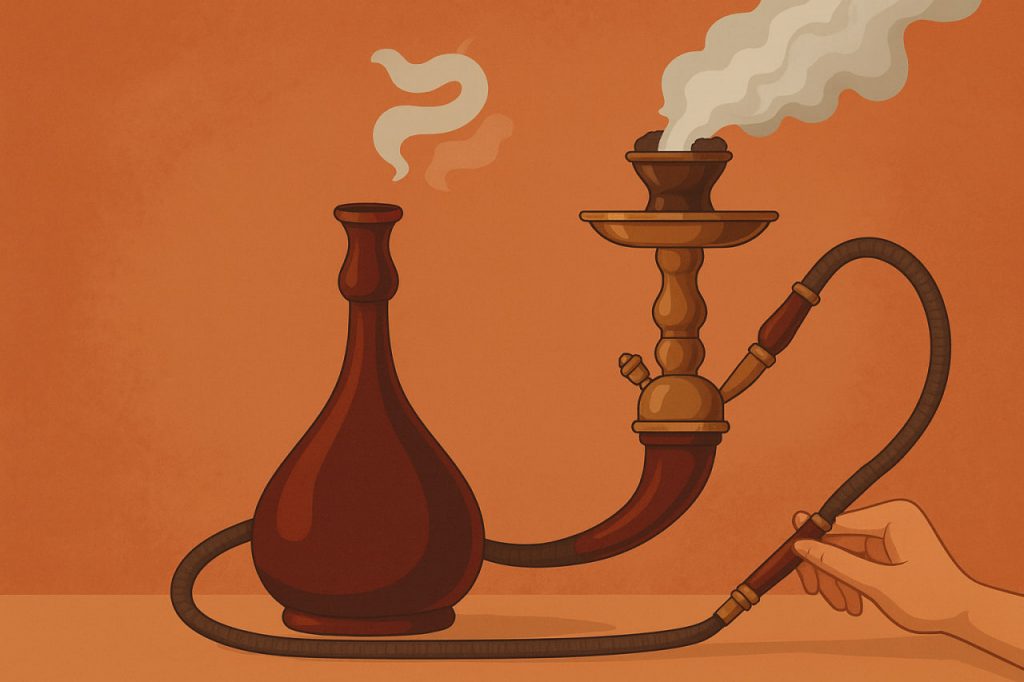Hookah (also known as shisha, narghile, or waterpipe) is a traditional smoking device that originated in the Middle East and South Asia. In recent years, it has gained worldwide popularity, often perceived as a “safer” alternative to cigarettes. However, scientific research shows that hookah smoking carries serious health risks, many of which are underestimated.
How a Hookah Works
- Tobacco (often flavored with molasses, fruit, or honey) is heated using charcoal.
- The smoke passes through water, cooling before being inhaled through a hose.
- The water does not filter out harmful substances — it only makes the smoke smoother, giving a false sense of safety.
Main Health Risks of Hookah
- High exposure to toxic substances
- Hookah smoke contains nicotine, tar, heavy metals, and carbon monoxide.
- A single session (lasting 45–60 minutes) may equal smoking 100 or more cigarettes in terms of smoke volume.
- Nicotine addiction
- Hookah delivers nicotine, which causes dependence and cravings, similar to cigarettes.
- Lung and heart diseases
- Increases risk of chronic bronchitis, emphysema, and cardiovascular problems.
- Carbon monoxide from burning charcoal reduces oxygen in the blood, straining the heart.
- Cancer risk
- Long-term use is linked to cancers of the lungs, mouth, throat, and bladder.
- Infections
- Sharing a hose can spread herpes, tuberculosis, and respiratory infections if hygiene is poor.
Why People Think Hookah Is Safer
- The water cooling effect reduces throat irritation, making smoke feel “lighter”.
- Flavorings mask the harshness of tobacco.
- Social settings make it seem less harmful.
But in reality, hookah smoke is just as toxic as cigarette smoke — sometimes even more.
Impact on Youth
Hookah lounges attract many young people, often introducing them to tobacco use. Studies show that those who start with hookah are more likely to move on to cigarettes or other nicotine products.
Conclusion
Despite its cultural and social appeal, hookah smoking is not safe. It exposes users to toxic chemicals, increases risks of addiction, lung disease, and cancer, and can even spread infections. The belief that water makes hookah harmless is a dangerous myth. Limiting or avoiding hookah use is an important step for protecting long-term health.
Glossary
- Nicotine – an addictive substance found in tobacco.
- Carbon monoxide – a toxic gas produced by burning charcoal.
- Tar – a sticky residue in smoke that damages lungs.
- Emphysema – a chronic lung disease caused by smoking.
- Addiction – inability to stop using a substance despite harm.


